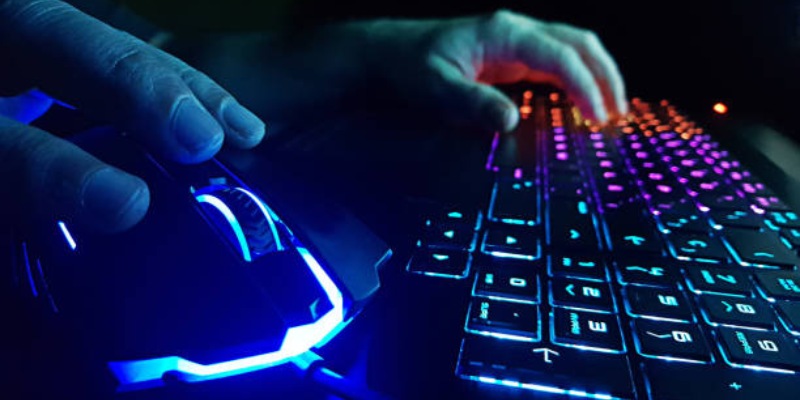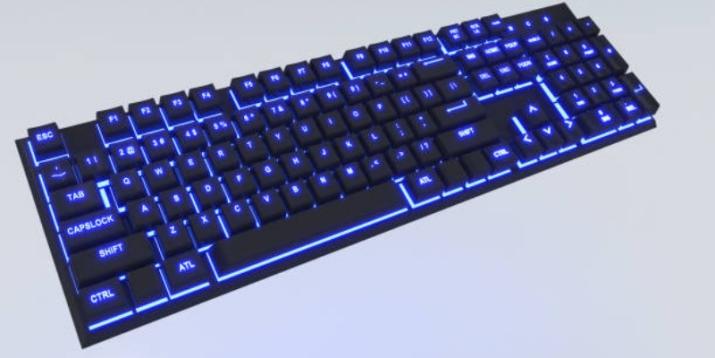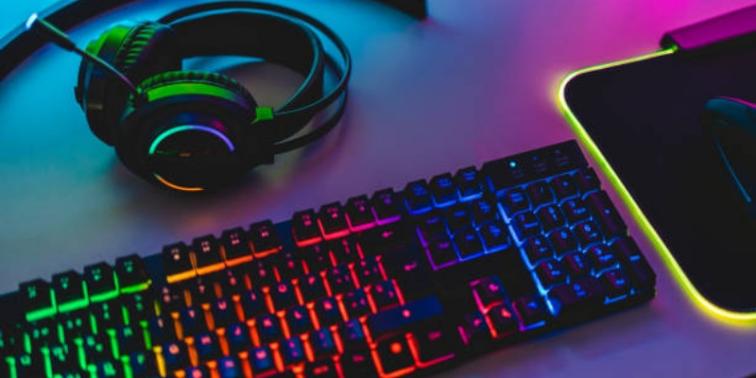How To Pick The Ideal Gaming Keyboard For Speed
The world of gaming is all about fast reflexes and precise moves. In a high-stakes match, a slow or unresponsive keyboard? Game over. That's why having the right gear isn't just helpful — it's a game-changer. Keyboards built for speed focus on what matters: response, durability, and comfort. Ready to feel the difference?
Know Your Switch Types
Switches are the components that reside underneath every key, and when you press down, it sends a signal. The three main types are linear, tactile and clicky. The smooth linear switches are effortless to press and require less force, making them great for fast typing and gaming. Tactile switches provide a slight bump to let you know a key was pressed, possibly preventing errors. Pinchy switches click loudly and are popular with those who like tactile feedback. Some newer keyboards employ optical or Hall Effect switches, which are also linear but far more durable and responsive.

Anti-Ghosting And Key Rollover Explained
Ghosting occurs when fast typing or gaming, and a key press is missed. Anti-ghosting lets you press multiple keys with alternate keystrokes and be accurately recorded. On that, the N-key rollover means all key work co-occurs without conflict. This is important for games with lots of simultaneous button presses. Find keyboards with full anti-ghosting and high rollover counts to minimise delays.
Wired Or Wireless: Which Is Faster?
Wired keyboards connect directly to a computer, offering the fastest and most stable connection. Wireless models have improved a lot in recent years. High-end wireless keyboards now use advanced tech that reduces lag to almost zero. They also last longer on a single charge. For example, some top-rated wireless models offer over 40 hours of use with RGB lights on. While wired options still edge out wireless keyboards in response time, wireless keyboards are catching up and providing more movement freedom.
Ergonomics And Comfort For Long Sessions
Comfort is key during long gaming marathons. A keyboard that feels good to use can prevent fatigue and injuries. Look for models with wrist rests or adjustable feet to find the best angle for your hands. Compact designs like tenkeyless (TKL) models save space and reduce strain. Mechanical keyboards, while durable, can feel heavy over time. Lighter switches and cushioned keycaps also help reduce hand Stress.
Customisation Options For Competitive Edge
Customisation gives players an edge. Macro keys let you assign complex commands to a single button, speeding up game actions. Programmable buttons can be set for specific tasks, like casting spells or switching weapons. RGB lighting isn't just for looks—it helps spot key bindings quickly in dark settings. Some keyboards even let you swap switches or adjust actuation force, tailoring the feel to your style.

Budget Vs Performance: Finding The Sweet Spot
High-end keyboards offer top-tier features but come with steep prices. Mid-range models balance cost and performance, making them a popular choice. Entry-level options may lack durability or customisation, but work well for casual gamers. Decide which features matter most: ultra-fast response, build quality, or extra buttons. Investing in a keyboard with a solid frame and long-lasting switches pays off in the long run.
Final Tips For Making Your Choice
Start by testing different switch types. Visit stores to try them out or read reviews from trusted sources. Focus on keyboards with strong anti-ghosting and low actuation force. Check battery life if considering wireless. Read user feedback on comfort and reliability. Compare prices across retailers to find deals. Always prioritise speed and accuracy over flashy extras.
Key Takeaways
Speed-focused gaming keyboards combine fast response times, durable switches, and ergonomic designs. Understanding switch types, anti-ghosting, and connectivity options helps narrow down choices. Balancing budget and features ensures value for money. Testing and research lead to a better fit for individual needs.
Popular Models Worth Considering
Several keyboards stand out for their speed-focused designs. Mid-range options offer excellent performance without breaking the bank. Compact layouts save desk space and reduce hand movement. High-end wireless models provide near-instant response with added convenience. Each model caters to different playstyles and preferences.
How To Test For Speed
When you're trying a keyboard, listen to it with a fast-paced game or typing exercise. Check that key activation is even and consistent during quick keystrokes. How responsive and smooth do the switches feel? Wireless users ensure the signal through walls or other obstacles. User reviews can also highlight any issues with lag or durability.
Staying Updated On New Releases
Technology evolves quickly. New generations usually outdo older models with lighter switches or better connectivity. Check on well-established tech sites or forums for updates. Waiting for reviews before purchasing can prevent hasty decisions. Staying current by upgrading occasionally lets you keep pace with the pack.

Building a Setup That Works
A fast keyboard is part of a larger setup. Pair it with a responsive mouse and a high-refresh-rate monitor for the best experience. Cable management tools keep wires tidy and prevent snagging. A clean, organised workspace reduces distractions and lets you focus on the game.
By focusing on switches, anti-ghosting, ergonomics, and customisation, players can find the perfect keyboard for speed. The right choice depends on personal playstyle, budget, and preferences. Researching and testing ensure a purchase that lasts through countless victories.